
Replacement Trailer Hub Bearing - 14125A

Thank you! Your comment has been submitted successfully. You should be able to view your question/comment here within a few days.
Error submitting comment. Please try again momentarily.
- All Info
- Reviews (83)
- Q & A (0)
- Videos (2)
- Photos
TruRyde Trailer Bearings Races Seals Caps - 14125A
- Bearings
- Standard Bearings
- 5200 lbs Axle
- 6000 lbs Axle
- 7000 lbs Axle
- 1.250 Inch I.D.
- Bearing 14125A
- TruRyde
- Race 14276
High-quality, tapered roller bearing is designed for high-speed use. Replacement part uses industry-standard number.
Features:
- Inner diameter: 1.250"
- Matching race (sold separately): 14276
- Application: outer bearing for 42865, 42866, 8-219-4 and 8-231-9 hubs
14125A Replacement Bearing
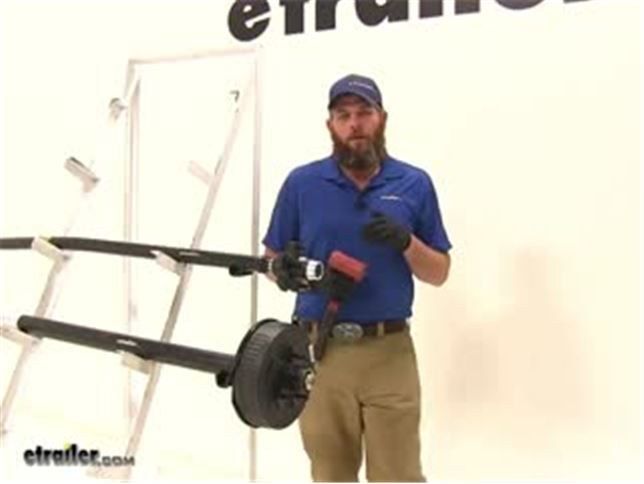

Videos are provided as a guide only. Refer to manufacturer installation instructions and specs for complete information.
Video Transcript for Trailer Bearings Races Seals and Caps Rebuild
Speaker 1: Today we're going to take you through the rebuild process on a couple of hubs. We've got an idler hub, and here we've got a hub and drum assembly. Works with electric rigs, but this can also work for just standard discs, if you've got a disc brake style setup.Basically what we're going to show you is how to get all of the bearings out. How to remove the seal. How to remove the race's if they're damaged, then get them replaced in the proper manner. We'll show you how to use an easy loop hub, which we have here.The first thing we are going to need to do is, get the grease cap off the end.
It can have either a rubber plug in it like this one does, or it can be a solid metal cap.These are pressed fit in there, basically by tapping on them on the back side. To remove them, a deadbolt hammer is typically what we're going to use. We're just going to start tapping as we go around. You'll see a little separation start right here, and slowly it'll work it's way off.Now the next step's going to vary a little bit depending on your axle setup. Do you see this is going to have a keeper that goes around the nut.
And that prevents that from being backed off, or removed. A lot of times you'll have a castle nut, which will have just little tabs that stick off, and there will be a cotter pin that passes through it. Just depending on your application, you need to get the keeper for the nut off. This style we just kind of pry out. A cotter pin you would just remove of course.Once we have that off ...
We'll start to take off the nut here, and the washer that's in behind it. Now yours should look a whole lot more dirty than this. There should be a lot of grease packed in, and through the hub, this one's brand new. We thought it'd be nice to show you the components before the grease was on .. Of our washer that comes off.And then here we're going to have our outer bearing.
Continue to pull that. We're gonig to have our inner bearing here. That sits in the backside of the hub. And we didn't put it in yet, we will show you how to put it in. But a seal would typically be covering the backside here. We'll show you how to use a seal removal tool, or another tool. To get that pried up and out. To get an access to that inner bearing.Now for a drum style like this, that process for disassembly is going to be just the same. One thing to keep in mind if you're using a disc brake setup. You'll have to remove the caliper before the disc is going to come off.Now once we have the spindle exposed, as we said this is going to be really greasy. We want to get all the grease removed, and the first thing we'll do is inspect it. We want to make sure that it looks just like what we have here. Everything's nice and smooth. We don't see any kind of discoloration, or any marring on the metal. Indicating that our bearing's got hot.If you do have any of those symptoms, at this point it's time to replace those bearings. You don't want to repack them. Get new bearings, and put in there. You might have a bearing that's come apart in here. Another surface to ensure is in good condition, is where your seal is going to go. That helps seal all the grease inside of our hub. With a damaged or broken seal, that grease is going to seep out. Either out of the hub, or in this case into our brake assembly.Now if your axle has brakes, we're also going to check the disc. Make sure it doesn't have any issues, or your hub. And this is going to be a hub and drum assembly. The brakes are going to ride on this machine surface. You're going to check that for signs of excessive heat, discoloration, or cracking. And this is our magnet surface. We'll check that surface for the same issues.Now inside the hub regardless if it's a disc brake, it's a drum brake like this. Or just a standard idler style hub. You're going to have an outer race. Would be right here, it's a small tapered piece of metal your bearing sits in, and rotates on. That's basically the outer portion of the bearing.You have the same thing here on the backside. This is called the inner race. Now if those show any signs of wear, overheating, or cracking. Those are also something we'll need to replace, which we'll show you how to do in just a minute.Now, with your brake assembly exposed, if you do have electric brakes like we have here. It's a good idea to check all the components for wear, cracking, maybe missing pieces. Check your pad thickness to make sure those are in good shape. Basically if you have a non working brake assembly and you put everything back together, you're just going to have to take it apart and do it all over again to get back to the brake assembly. This gives you a really good option to be able to change them out.And most applications are going to use a four, or maybe a five bolt flange to hold them in place. And you'll just remove the lock nuts, or sometimes you'll have a hex nut with a lock washer. You want to remove those, and then simply slide your assembly off after you cut the wiring.The friction material itself should also be checked for any kinds of cracking, or overheating. If you have any grease inside the system at all, it's likely it's gotten on those pads. It's a good idea to get those changed. Now as far as the removal of the races go, it's going to be just the same whether we're using an idler style hub like we have here. A drum brake like we have here. You can basically see where the idler is, here in the middle of the hub. It's going to go all the way around there, and we just have this extra material here to provide our braking surface.Now if you're doing a disc brake style job again, it's going to be just the same here with the races living inside of the actual hub portion. You'll just have the discs there for the brakes to make contact. We're going to use this little bit smaller one, it's a little bit easier to manage to show you how to get these out. We've talked about where the races are. The outer here, the inner being closer to the inside, but on the backside of the race there's a little lip. That lip's meant to stick out just a little bit further than the hub, and provide us an area to put our tool on, and help to drive that out.If you look all the way through there on that inner race, you'll see that little lip that sticks out just from the hub slightly, and it gives us enough area to use our tool on. Now generally to remove these you're going to use a punch, similar to this. Some guys will use a screwdriver. Or a piece of pipe. If you have a piece of pipe that's small enough to fit inside of that diameter, you can take that down through and allow it to rest on that lip.Use our punch, and then just need a hammer. And we'll start working that out. We're going to tap all the way around. Kind of equally, and evenly apply the force to get it to come on out of the bottom for us.You can see now as it starts to come out there's going to be a little gap created between the hub and the race. And we can just keep going, bringing it on out. Then you can inspect the inside of the hub surface there. Make sure no damage or anything has occurred, and repeat that same process for the outer race if you plan on removing and replacing that one.Now in the outer flat edge, you can see we're going to have our tapered edge on this side. If we roll our race over to the flat side, typically there's going to be a manufacturers part number on there. That will help you identify which race it is, that you need to go back in your system. If those are rubbed off, worn off, if you can't read them. You can measure the outside, to outside diameter of the race here. It's a good idea to use a micrometer to get it exact.Now here's your basic micrometer. And again, the outside of the race is what we're going to need to measure. You want to go . I set the thickest point there. Looks like this one's going to be about 1.98. That's going to be the measurement you'll want to supply.Now while we've got this out, let's also look at the proper way to measure our bearing. Instead of the outside for the bearing, we need to measure the inside diameter. That's going to be pretty simple. Let's pull that out, find the largest measurement we can. Which here, looks like it's going to be 1.03. With that information, we'll be able to get the correct bearing, and the correct race, so they'll fit together properly and make a full bearing kit for us.Now here's the race, we're going to show you how to get this put back in. Basically just going to press fit inside of our hubs. We need to get it down on there. Kind of like that. And you'll have a couple options. A lot of times you're going to see do it yourself or at homer, just going to use a wooden block. Just place it on there. That's going to get you started, but at that point you'll struggle in getting it to go all the way down into it's seat.Now to take care of that problem, there are several seal drivers that are available. Seal and race drivers that are available out there on the market. It's designed to fit down inside of our race, inside of our hub and get it down there where it needs to go. This is part number ptw83020, has several different sizes, even if you have multiple trailers it's going to do the job.Now the side with the angle on it, is designed to fit down inside of our race. If we use the other side, that's going to be for driving your seal into place. Just want to hold it, and take it on in with your hammer. You'll see, you just want to insure that our race is all the way up against that line on the hub where it's supposed to mate to.Now when it comes time to pack your bearings you're going to have several different ways of doing this. You can just use your hand, is the traditional method. That's going to be the method probably reserved for the very occasional trailer work kind of situation. If you do it once or twice a year, probably get away with it that way.Next you would go to a, kind of a sandwich funnel style almost. If you look inside of there, you can see the bearing. It's located between the two pieces. Just use a grease gun. Start filling that with grease, and that's going to fill our bearing for us. And the third, with this one you're just going to place your bearing down and in. It should be pretty close to center. And then we've got our cone her that's going to go down and secure that.Now I think this style, wastes a little bit more grease than what this style will. This has a dust cap. You can see, you can keep your grease in there, put your dust cap on there and save it for later use. This will be if your going to do it every couple years. And this particular style would be if you're a more regular user.Let's start by showing you how to use a bearing packer. Similar to this. Again, we've just got our grease inaudible 00:11:07 here on the top. And then just slowly start to fill it. Now I like this style quite a bit. I think even regular users might enjoy it, because you can get a really quick visual look at that bearing. You're not going to have to overdo it, or have to much grease.You can kind of see in there now, we're starting to get grease to come out of it. Couple more pumps, we'll be good. You can see we've got grease coming out all the way around. Where all of our bearings are. Got a little bit of excess there. Just take that around the outside of it. And then we should be able to lift it off. And now you can see what we we're talking about. Just a little bit of excess there, that you're just going to wind up wasting.Now we'll take our bearing, we're going to place it right down in our race. And then we'll cap off the back with our seal. Right now our seal's going to fit in just like our race did. It's going to have a little bit of a pressure fit to it. Now very often in this situation, I see people using the four by four method. Kind of here, just placing that on and tapping it. As an option though, if you do have one of these. You can see that's designed to fit right on the top of the seal. And help drive it in.The biggest thing here is, just going to be getting it driven in squarely. You can see, this side's in a little bit further than this side. I'm going to start this side first. Now since we didn't have the opportunity to show you before, we're going to take a look at pulling a seal. Now this is a seal puller, we carry this on our website part number ptw1219. This is meant to hook underneath the seal. And then you kind of pull up on it, and just like our race you'll have to work all the way around that edge. Just bringing it out a little at a time.If you don't have that available. Another option would be a screwdriver. You just kind of get that under the seal, and turn it. And see, that'll allow you to also pop that out. We've taken care of our race. Our inner bearing. Our seal. The last component, before we put our hub back in place is going to be our outer bearing. Now with this bearing, I'll show you the hand packing method.This is definitely . Slightly dirtier method than the bearing packer. When we get grease on our hand we want to look at the larger side of the bearing. This is the smaller side. We have a larger side In between the inside and outside there's a gap. We can see our rollers in there. We want to grab that, and use that gap and shove grease inside of it. Now this is going to take a little bit, you want to work in the same spot until you get the grease pushed all the way through. We can see on the top there we've got a little bit starting to come through.And once we push it in the bottom, and you see it start coming out the of the top in those little drips, it's going to indicate that, that section's fully packed. Just need to work all the way around their outside edge now and do the same thing. Alright, once that's all the way around . The bearing will be ready for use.Now one more thing I like to do. We can see our inner bearing there, and our outer bearing. Well between the two, got a pretty big gap in there. If you'll take a . Pretty good amount of grease. We're just going to go all the way around. See how we can go all the way around the inside and just line that really well. The more grease we have in here, the less chance we have of any moisture getting in there, which can cause corrosion, rust, pitting. Pretty much things we do not like when it comes to bearings, races, and hubs.Put plenty of grease in there. And then this one does have the easy lube spindle, that'll even fill it in more. Now we can get our assembly slid on. I like to keep my thumbs on that outer bearing, just to prevent it from . inaudible 00:15:28 pushed off there. Now we can put on the original hardware that we removed, in taking off our hub the first time. In our case, we had our washer and our nut.Now most commonly you'll see pliers similar to this being used. We basically want to get that tightened down. Once it's fully tightened down you'll feel some resistance in the hub. We back it off just slightly. That'll give us a little bit more freedom of motion there. Something you don't want however . Is any movement in, or out on your hub. You want to be sure that everything is compressed, and you don't have what's called end play. Which would be the play in and out.Once we've got that set, then you'll put on whatever tight keeper yours came with. Get that put back in place. Now with an easy lube style hub, you're going to place your grease gun on the end, and then you can just fill the remainder of that hub up.Now for your typical applications, you're either going to have a solid cap, or a cap that'll have a rubber plug in it. A solid cap's going to be for an axle without the grease inaudible 00:16:51 here on the end. Goes on there. Just knock it on with your rubber mallet. Same with the one with the plug. Just gives you a removable area there, be able to cap that off.We'll show you how to put that on. Now as alternatives as well, a lot of times on boat trailers and marine kind of situations. You'll see a bearing buddy. This is going to apply a little bit of pressure on the grease, you'll fill it up. This kind of comes out just a little bit. That applies constant pressure on the grease to make sure we don't have any air, or anything like that. Then there is also an oil bath hub available. Now this is going to be for use with seals that are going to be designed specifically for oil bath use. You'll have to change that seal.We're using a double lip seal. There are also single lip seals available. Of course a double lip seal is going to give you just a little additional security. Keep that in mind when you order. But let's get this knocked on there now so you can see how that works. We just want to take the cap, we're going to center it. This is going to be very similar to what we did with the seal. And then just gently start tapping it around the outside. And it'll seep down on there for you.It's really going to be the same thing that you'll do with any of the end caps. Now with this side done, it's a good idea to take care of all the other hubs. Get them all on the same maintenance schedule. And as long as you'll periodically check the grease, take your trailer out for a trip occasionally. Just to keep everything lubricated. It should extend the life of these parts, and give us years of good service.
Customer Satisfaction Score:
99% were satisfied with this product
1% of customers were not satisfied
- Wrong item was ordered
- Product did not meet expectations
- etrailer mistake
Customer Reviews
Replacement Trailer Hub Bearing - 14125A - 14125A
Average Customer Rating: 4.7 out of 5 stars (83 Customer Reviews)
High-quality, tapered roller bearing is designed for high-speed use. Replacement part uses industry-standard number.
bought these bearings and seals approximately a year ago and installed them myself. I watched the instruction video etrailer has a just followed it. Everything went smoothly and we have put approximately 6,000 miles on them since the install. All is good.
I can say that etrailer is top notch when it comes to customer service. I had some question about the MORryde cushioned pin box as my 5th wheel gross weight falls between 2 different models. etrailer answered my question and the one they were unsure of they directed me to MORryde to get specifics. By no means does this reflect on etrailer but the shipping handled by UPS just flat sucks. I scheduled a day later than they originally wanted me to be available for delivery due to prior commitments. The next day 30 minutes after scheduled appointment I find out it wasn’t even loaded on the trailer. I decided to drive 3 hours round trip to just pick it up myself instead of dealing with UPS again. This won’t stop me from being a return customer, etrailer ROCKS!!!!
every thing was fantastic and worth it thank you
Good product and great company to deal with.
fit perfectly
Finished my first bearing re-pack on our 369 this weekend. Order a set of bearings and seals in case of an emergency if needed. Quick delivery. Always happy with etrailer!
At least these were in a bag together.
I bought 4 inner bearings, 4 outer bearings, 4 seals and 4 cotter pins. These were the only ones that were in a bag together everyone else was loose in the box.
Great trailer hub assy, Will be using this hub to upgrade from a 6 lug hub to this 8 lug hub. Great price and excellent customer support.
Great looking bearing kit with a great price, purchased this kit as a spare replacement for new hub assy. purchased. Great customer service.
Kim was awesome to help me with my order, ordered on Wednesday afternoon and had them Friday afternoon! All item were correct and will have all my trailer parts business from now on! Great customer service! Thanks
Quick Communication and getting issues resolved quicker than we request
SERVICE WAS GREAT
Easy, simple ordering
fits my 1999 Kaufman 3 car wedge trailer with Dexter 12"x2" brakes 6k 7k lb axles 8 lug wheels
Exactly what I needed. Youtube showed me how to take out the old and put in the new bearings and races. They fit perfectly. The part no. was hard to research, but I was pretty sure what I ordered was the right set. I confirmed the part numbers when I beat the races out of the hub. The part number was embossed on the inside of the race and they matched the ones I ordered. I got them via ground delivery much sooner than they said. I received them in about three days and it only took an afternood to install them and new brakes. Can't beat the satisfaction of doing something yourself and saving hundreds of dollars in the process.

4 NEW DRUMS 12 -2 INCH 8 LUGS. FOR MY TRAILER THEY ARE OUT OF ROUND FROM DAY ONE . IF I USED TRAILER I WILL GET THEM CUT.{ U HAVE GOOD PRICE.} BEARING OK.
Great service..need to make answering the phone more of a priority.
Waiting that long for an answer is not top shelf service.
The rest is good.
They look to be a quality product. I would have liked the bearings and races packaged so they could be stored with out damage or a chance of rusting. Two of these sets are spares so I don't have to sideline a trailer for an extended period.

No complaint here. I have been very pleased with the performance of these bearings and races. They have been in place for several thousand miles with positive results to date.
Product was fairly priced for what it was - a Chinese bearing. My only issue was the long delivery time. I had to go local and buy another one since I couldn't wait any longer.
These bearings are being used in a Wind Turbine YAW and mount build.
Etrailer having a full spec sheet makes this possible and the quality is a degree above the choices I had locally.
Good quality bearing with no play to speak of. Replaced a frozen bearing on a trailer. Fit the race as it should.

Needed to replace for EHB disc brake c onversion

So far the replacement bearings are working fine.
First one received damaged but etrailer sent me another one with no issues. Great customer service and pricing.
See what our Experts say about this TruRyde Trailer Bearings Races Seals Caps
- How to Pick Out Replacement Bearings for Trailer with Unknown AxleI wasn't able to determine which axles you have on your trailer, but since there is a chance they could have been changed at one point the only solution I can provide would be to check your current setup to find the correct bearings. The only two solution I have for you would be to remove the hubs and get the numbers that are stamped on the bearing or for you to remove the hubs and use a digital or dial caliper to measure where the bearings and seal ride (see pic). With that info I can...
view full answer... - Will Upgrading Hub Capacity Fix Leaking GreaseHubs with a larger weight capacity will not ensure you stop leaking grease, though all new hubs may fix the issue. The reason you are leaking could be a few different things, from using a powered grease gun if you have an EZ Lube spindle to a seal not being installed flush with the hub or the hub could be somehow damaged. I recommend taking you hubs off and inspecting it for damage while also ensuring the bearings and seal are correctly installed.
view full answer... - How to Determine Which Bearings Will Fit a 2013 Jayco Swift 185RBThere are going to be 2 ways of confirming which bearings will be the correct replacements. Unfortunately, I was unable to find anything confirming which ones are used. So with that being said, the quickest and easiest way will be to contact the manufacturer of the trailer with your VIN. This is something that they will have on file and should be able to tell you exactly which inner and outer bearings are needed. If for some reason they cannot tell you what is needed, you will need to...
view full answer... - What is Better, TruRyde or Timken Trailer BearingsNot all bearings are created equal, but you would be hard-pressed to find one that is vastly superior than another. Whether it is TruRyde, Timken, or some other brand, if the bearings are properly maintained, used in the correct hub, and within the capacity of the trailer they will last a long time. They do not really have a rating in miles or time. You will need to inspect them for time to time, perhaps when yo uare inspecting other parts like brakes or suspension components. I have included...
view full answer... - Can I Use Different Bearings If the Inner Diameter (I.D) Is The SameYou are correct, when replacing the hub/drum on your trailer you will only need to match the spindle to the inner diameter (I.D) of the bearings. The outer diameter (O.D) of the bearings would obviously have to match the hub but if you purchase them together as a kit then there would be no need to do this as it has already been done for you. The reason for this is that there can be more than one bearing with the same inner diameter (I.D). For example, part # 15123 and part # 14125A both...
view full answer... - Can a 14125A Trailer Wheel Bearing Replace a 15123 BearingNo, the # 14125A bearing has different applications than a # 15123 bearing. The outer diameters are different. Both are readily available bearings. If you have a 15123 bearing then you would need that same bearing as a replacement. If you can provide the inner and outer bearing numbers on your existing hubs, I can make some recommendations for replacement parts. I have included a video on bearings for you.
view full answer... - Will Bearing Buddy # BB2717 Work With AL-KO 7,000-Lb AxleYou will want to use a digital caliper like part # PTW80157 to measure the inside dimension of your hub to make sure you get the correct Bearing Buddy. The Bearing Buddy Bearing Protectors, part # BB2717 are designed to fit a hub bore that is 2.717 inches diameter. If your outer bearing is a # 14125A, then the # BB2717 would work for you.
view full answer... - Recommendation to Replace a Better Built Tilt Trailer AxleIt took a little researching, but I was able to confirm the 7800026 is another number for # 25580 and 7800017 is another number for # 14125A. So with that being said, the Dexter # 8327872 will definitely be a good replacement for your axle as everything will match what you currently have.
view full answer... - How To Find Replacement Bearings For 7K Axle You will have to let me know what your current inner and outer bearing numbers are that you currently have on your spindle. There should be a small number sequence that will tell you which part you would need. You may have to give the bearings a hot soap wash to make the bearing numbers legible. You can also measure the bearings inner diameter by using a caliper # PTW80157. When you find out what bearings you have please reach back out to me and I can link the correct parts for you.
view full answer... - Replacing a Lippert Axle With a Dexter Axle 8327872From what I could find out about the axle you currently have, The Dexter Axle # 8327872, should work. That being said, it is highly advisable to double check a few things before biting the bullet. First, this axle utilizes the inner bearing # 25580 and the outer bearing # 14125A. You will need to double check your current bearings to confirm your hubs will fit properly. Second, the 94 and 78 in the string of numbers and letters most likely refers to the measurements, but it definitely...
view full answer... - Correct Replacement Bearing and Race to Match 02475 Bearing and 14276 RaceThere are differences in them but we do have what you are looking for and they can in some situations be used together. The Replacement Trailer Hub Bearing you have part # 02475 and Replacement Race for 02475 Bearing part # 02420 are designed to work together and the. The race you have Replacement Race for 14125A Bearing part # 14276 for bearing part # 14125A. With that said both bearings have the same inner diameter but the races are slightly different in size the 02475 is 2.688" outer...
view full answer... - Needing to Find the Correct Bearing Buddies on 7,000 Lbs Trailer AxlesWhen finding which set of Bearing Buddies will work on your trailer axles, you will need to find a couple of pieces of information. First, know the outer bearing number would be the best piece of info that you can use to figure out which Bearing Buddies set will fit your axles. For example, if your outer bearing is # 14125A, then # BB2717SS would be the correct Bearing Buddies Set. If you can measure the outer diameter of the part, then you can also look-up the Bearing Buddies Set...
view full answer... - Will Bearing Buddy Fit 7k Dexter Axle With Broken Zerk FittingBearing Buddy Bearing Protectors will fit if the zerk fitting is broken off. Some people actually remove the zerk fitting on purpose and add the Bearing Buddy instead. This would keep everything sealed while still allowing you to add grease from the outside. More than likely you need the # BB2717SS which fits a 2.717" hub bore and # 14125A outer bearings. This is typically the correct part for Dexter 7k axles like yours.
view full answer... - Do I Have A 6,000lb or 7,000lb Axle Under My Starlite Gooseneck Trailer? The combination of the Bearings # 25580 and # 14125A are most commonly found in 7,000lb axles. The Bearing Kit # BK3-210 would contain new bearings, races, grease seal, cotter pin and a spindle washer for 1 hub. The best way to determine exactly what you have is to find the serial number on the axle. If it is a Dexter axle the serial number will be stamped in the rear portion of the axle tube approximately 18" from the passenger hub. If you can find me that number I can confirm exactly...
view full answer... - Seals & Bearings For Calkin Boat TrailerHere is a 1.75" Inner bearing # 25580 and here is the 1.25" # 14125A. Here is the seal # GS-2125DL.
view full answer... - Replacement Bearings for Silver Eagle M1101 TrailerThe bearings you need for your Silver Eagle M1101 trailer are # 25580 and # 14125A. If you would like a full bearing kit then we also have the # BK3-200 as well.
view full answer... - Recommendation For Replacement Bearings, Races, Seals For 2004 Millennium Gooseneck TrailerThe spindles will be same for either axle. There are several options for replacement bearings, races, and seals but common sizes for a 7,000-lb axle are inner bearings like Item # 25580 and outer bearings like Item # 14125A. If these match your new trailer then a replacement kit would be the TruRyde Bearing Kit, Item # BK3-200. I have linked some articles and videos about bearings that can help you out. If these do not match your new trailer then send me your bearings numbers or...
view full answer... - What Bearings and Brake Replacement Kits do You Recommend for My 12" 6,000 Pound Axles?For the inner bearings that you have with number 25580, the correct part you need is the Replacement Trailer Hub Bearing - 25580 # 25580. For the outer bearing, that is the Replacement Trailer Hub Bearing # 14125A. As far as the brake assemblies, as long as it is a 12-inch 6,000 pound axle, I recommend the Dexter Electric Trailer Brake Kit - 12" - Left and Right Hand Assemblies # 23-105-106. If you need hubs and drums to go along with the bearings and assemblies, feel free to respond...
view full answer... - Replacement Bearings and Grease Seal for 7,000 Pound Lippert AxleAccording to Lippert, the correct bearing kit is the # BK3-200. This includes the # 14125A outer and # 25580 inner bearing, along with the 10-36 grease seal.
view full answer... - Will Dexter E-Z Lube Trailer Hub Assembly Work on Non E-Z Lube Spindle As long as the spindles on your trailer use the # 25580 inner bearing and the # 14125A outer bearing, the Dexter Trailer Hub and Drum Assembly # 42866UC3-EZ will work perfectly whether or not you have E-Z Lube spindles. The only difference between this EZ Lube hub and a non E-Z Lube hub is that this hub will have a removable rubber seal on the cap that allows easy access to a grease fitting that would be on E-Z Lube Spindles. You can absolutely use this on your standard spindles, though....
view full answer... - Will Hub with 25580 and 14125A Bearings Fit in Place of a Hub with 25580 and LM67048 BearingsYes, you can use a hub and drum assembly that uses outer bearing # 14125A. It has the same inner diameter as the # LM67048 bearing but with a different outer diameter. Hub and drum assembly # 42866UC3 will work if you need an 8 on 6-1/2 bolt pattern (which is the only option for that particular bearing combination).
view full answer... - Inner And Outer Bearing Sizes For A Dexter Axle I got in touch with my contact at Dexter and I got my hands on a spec sheet for this axle which I have attached below. I was able to cross reference the 031-17-02 bearing to a # 14125A and the 031-030-02 to a # 25580. If you need a bearing kit for this axle we have one with part # BK3-200.
view full answer... - How to Determine the Correct Bearing Kit for Lippert 6K and 7K AxlesThe only recommendation I can make for you would be to remove your hub and current bearings so that you can determine what you currently have either by measuring it or getting the number off it and then pick out the correct seal based on that info. You will need to measure with a dial or digital caliper like # PTW80157 where the seal rides on the spindle and then the inner bore of the hub where the outside of the hub meets it. If you get back to me with these numbers or measurements I'd...
view full answer...
Do you have a question about this Trailer Bearings Races Seals Cap?
Info for this part was:









At etrailer.com we provide the best information available about the products we sell. We take the quality of our information seriously so that you can get the right part the first time. Let us know if anything is missing or if you have any questions.



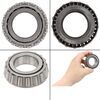
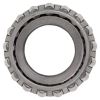

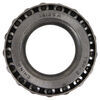


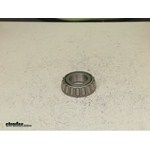
























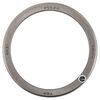


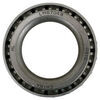



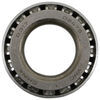












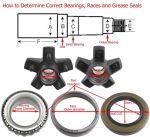
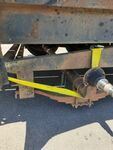
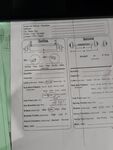
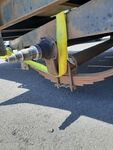
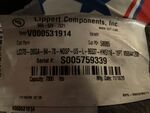

Sid
12/4/2023
Two years since the original install. I pulled the bearings after one year and repacked them. They were in like new condition yet. They are working well and when needed I will buy more.